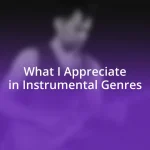Key takeaways:
- Understanding musical notation opened a new world for the author, enabling fluent music reading and deeper connections with compositions.
- Exploring scales and keys revealed the emotional impact of music, showcasing how different keys create unique moods and influence chord progressions.
- Composing with music theory combined creativity and structure, leading to meaningful storytelling through music, while overcoming challenges fostered growth and new insights.

Introduction to Music Theory
When I first encountered music theory, it felt like uncovering a secret language that described the very essence of music. I remember staring at my notation sheets, feeling both exhilarated and overwhelmed—how could a set of symbols convey such deep emotions? It sparked a sense of curiosity in me that I still feel every time I delve into a new concept.
Have you ever wondered why certain chords evoke different feelings? For me, learning about intervals—the distance between notes—was a revelation. It was like peeling back layers to discover how a simple change can shift an entire mood. Diving into music theory taught me to appreciate the intricate tapestry of sound that surrounds us and how composers weave their stories through carefully chosen notes.
What struck me the most was how music theory serves as a bridge between creativity and structure. It’s not just about rules; it’s about understanding the ‘why’ behind the art. As I learned about scales and harmonies, I felt more equipped to express myself through my music, like finally receiving the tools to translate my thoughts and emotions into melodies.

Understanding Musical Notation
Understanding musical notation was a transformative experience for me. I can still recall the day I finally grasped how a single note on a staff could represent a sound, a feeling, or an idea. Each symbol felt like a little puzzle piece, fitting together to create a larger picture. As I started associating symbols with sounds, it felt as if I was unlocking a hidden world where music lived and breathed.
Here’s a quick overview of some essential elements of musical notation:
- Staff: The five horizontal lines where notes are written. Each line and space represents a different pitch.
- Notes: Symbols indicating sound, with variations (like whole notes, half notes, quarter notes) that demonstrate how long a note should last.
- Clefs: Symbols at the beginning of the staff that indicate which notes correspond to which lines and spaces, like the treble and bass clef.
- Time Signature: Found at the start of the piece, it tells you how many beats are in each measure and which note value gets the beat.
- Key Signature: Located at the beginning of the staff, it indicates the key of the piece, showing which notes are sharp or flat throughout.
Every time I came across these symbols in my practice, it felt like catching glimpses of an intricate dance. Once I recognized them, I could start to read music fluently. Each note began to resonate with me on a deeper level, allowing me to connect with the compositions in an entirely new way.

Exploring Scales and Keys
Learning scales and keys was like discovering the foundation of my musical universe. When I first encountered major and minor scales, I felt as if I was unlocking doors to different emotional landscapes. I remember practicing C major and feeling bright and uplifting, while switching to A minor instantly evoked a sense of introspection. This experience taught me that scales are more than just sequences of notes; they’re emotional pathways.
As I dove deeper into the concept of keys, it became clear that they create the framework for a composition. Each key has its own character, influencing how a piece feels and progresses. I’ll never forget the moment I realized how shifting from one key to another could transform the entire vibe of a song—suddenly, what seemed mundane became extraordinary. It’s fascinating how these subtle changes can wield such power in the hands of a composer and performer alike.
The interplay between scales and keys also led me to better understand chord progressions. I discovered that the relationships between notes can generate tension and resolution, which are vital in storytelling through music. Finding my way through a piece, aligning the scales with the key signature, and feeling the emotions resonate with each chord felt like embarking on a thrilling adventure. The more I explored, the more liberated I felt in expressing my ideas musically.
| Scale Type | Character |
|---|---|
| Major Scales | Bright and Happy |
| Minor Scales | Dark and Melancholic |
| Chromatic Scales | Intense and Complex |
| Whole Tone Scales | Dreamy and Ethereal |
| Pentatonic Scales | Simple and Melodic |

Learning Chord Progressions
Learning chord progressions was a pivotal moment in my musical journey. I vividly remember the first time I played a simple I-IV-V progression. The way those chords flowed effortlessly together ignited a sense of excitement in me. I thought, “How can three chords create such a powerful emotional response?” This curiosity led me to experiment with different progressions and explore the emotions they evoked, revealing a whole new dimension to my playing.
As I delved deeper, I learned about the importance of tension and resolution within progressions. It was fascinating to discover how a transition from a minor chord to a major chord could create a sense of uplift or relief. I still smile when I recall writing my first song using the classic I-vi-IV-V progression. It felt like riding a wave of creativity, where each chord choice was an invitation to express my feelings. This hands-on experience solidified my understanding that chord progressions serve as the backbone of a song, shaping its mood and guiding the listener’s journey.
I often ask myself, what makes a chord progression truly memorable? Through my explorations, I concluded that it’s the unique combinations and unexpected twists that keep listeners engaged. One evening, while practicing, I stumbled upon a progression that combined unexpected chords, creating a captivating tension that lingered beautifully before resolving. It was in that moment that I realized chord progressions are not merely technical sequences but dynamic storytelling tools that breathe life into music.

Applying Ear Training Techniques
Applying ear training techniques was a game-changer in my music education. I can still recall those early days when I diligently practiced interval recognition. There was a certain thrill in identifying the difference between a major third and a perfect fifth—each successful identification felt like a small achievement. Have you ever experienced that rush when you get something right against the odds? It’s exhilarating!
I remember sitting in my car, jamming along to my favorite songs, trying to pick out the melodies by ear. This practice not only sharpened my listening skills but also deepened my connection to the music I loved. One day, I successfully played a verse from a song I’d only heard once! That moment of realization—being able to replicate something purely by listening—felt like discovering a new superpower. I recommend dedicating a few minutes each day to this practice; it’s surprisingly rewarding.
A fun technique I’ve found useful is singing or humming back melodies. It might sound silly, but I’ve transformed countless commute times into training sessions. You might be surprised by how much easier identifying notes and progressions becomes when you engage with the music physically. Have you tried it? It’s all about those little wins that build your ear. Trust me, honing your ear will not only make you a better musician; it will open doors to a richer understanding of how music works.

Composing with Music Theory
Composing music with the knowledge of music theory has been a thrilling experience for me. I recall one rainy afternoon sitting at my piano, where I decided to experiment with different modes. Suddenly, I stumbled upon the Dorian mode, and it was like a fresh breeze swept through my creativity. The unique sound sparked a wave of inspiration, leading me to write a piece that felt both mysterious and inviting. Have you ever had a moment when the music just flows, and you can’t help but smile at what you’ve created?
As I ventured further into composition, I realized the value of structure. One evening, while developing a song, I meticulously applied techniques like verse-chorus form. The sense of balance and progression that unfolded gave my piece a clearer narrative. I began to understand that each section serves its purpose, guiding the listener on a journey. It made me wonder, how often do we overlook the importance of structure in crafting a compelling story through sound?
One aspect I truly cherish is the interplay between theory and creativity. I remember a time when I focused on incorporating counterpoint in my arrangements. The first time the melodies danced beautifully together, I felt an overwhelming sense of accomplishment. It was as if I had discovered a secret language of harmony that transformed my music into a conversation. Do you feel that thrill when you unlock a new technique? That’s the joy—in finding ways to combine theory with your unique voice, breathing life into your compositions.

My Personal Insights and Challenges
One of the most significant challenges I faced in my journey with music theory was grasping complex concepts like harmony and scales. I vividly recall a night spent poring over chord progressions, feeling like I was stuck in a maze with no exit. Each time I thought I understood a principle, another layer of complexity would surface. Have you ever felt overwhelmed while trying to learn something new? I did, but pushing through those moments of frustration ultimately sharpened my skills.
On the flip side, there were remarkable insights that emerged from my struggles. I found that every mistake offered a unique lesson. For instance, during one of my composition sessions, I accidentally played a dissonant chord, and instead of discarding it, I explored its potential. To my surprise, that unexpected sound paved the way for an entirely new piece! Isn’t it fascinating how what seems like a setback can often lead to creative sparks?
Reflecting on my music theory journey, I’ve come to appreciate the patience required in learning. It was disheartening to see my progress slow down during certain periods. However, each time I revisited a challenging topic, I discovered new depths to my understanding. It’s like peeling back layers of an onion—every layer reveals something different and beautiful. Do you know what I mean? The journey may be difficult, but ultimately, it’s these moments of revelation that shape us as musicians.














